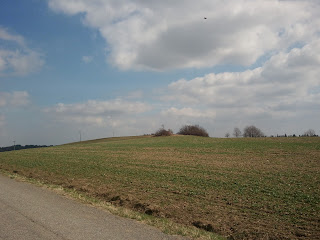So a taster of things to come. Spring finally sprung in Bohemia, and myself and Wife decided to decamp from Prague for the day and visit the family country cottage down south (it’s called “chalupa” in Czech). Now for a history buff like myself, it’s an absolute joy as it stands right in the middle of the battlefield of Jankov (Jankow, Jankau), allegedly the bloodiest battle of the Thirty years War, where the Swedish Army under Tortenson, annihilated the main Imperial army (including all the Bavarian cavalry) under Hatzfeld. The dramatic change in strategic strength of the Swedes vis-à-vis the Hapsburgs certainly helped set in motion renewed efforts to end the conflict, which concluded with the Treaty and Peace of Westphalia three years later in 1648.
Our route took us along the first phase of the battle from Broumovice, along the road parallel to "Chapel Hill", towards Ceckov and past where the main body of fighting in the first phase of the battle took place in Nosakov, and the hill where the Swedes stationed their large artillery train. (The picture above is of Jankov in the distance from the flanking route of the Swedish Army. The picture below is looking up towards "Chapel Hill" where the first early morning encounter occured).
The Swedes attempted what was probably one of the first flank marches in early modern warfare. Seeking a way around the Imperial left wing the Swedes came down from the ridge to the west of Jankow, and followed a South-Easterly route concealed by a number of low lying ridges and forests. Unfortunately for them they crashed into Imperial pickets stationed far to the south of the Imperial left flank. The Imperials alerted, began to change position to meet the early morning attack and the battle was begun.
Below, from a point on the Swedish Flanking march, looking towards Jankov to the North-East. The dark area on the middle horizon is the Hartmany forest. In 1645 this would have been much larger. This is where the main Swedish and Imperial forces crashed into each other by mid morning, and where half the fighting took place (phase 2 as marked on the map above). The Imperials then retired to a final position on a low ridge just behind Jankov village.
As the area has never really been developed, the battlfield is almost intact, and also makes for an excellent cycling trip.I will be paying a longer visit to Jankov in the coming weeks, and will provide a more detailed photo journal.




